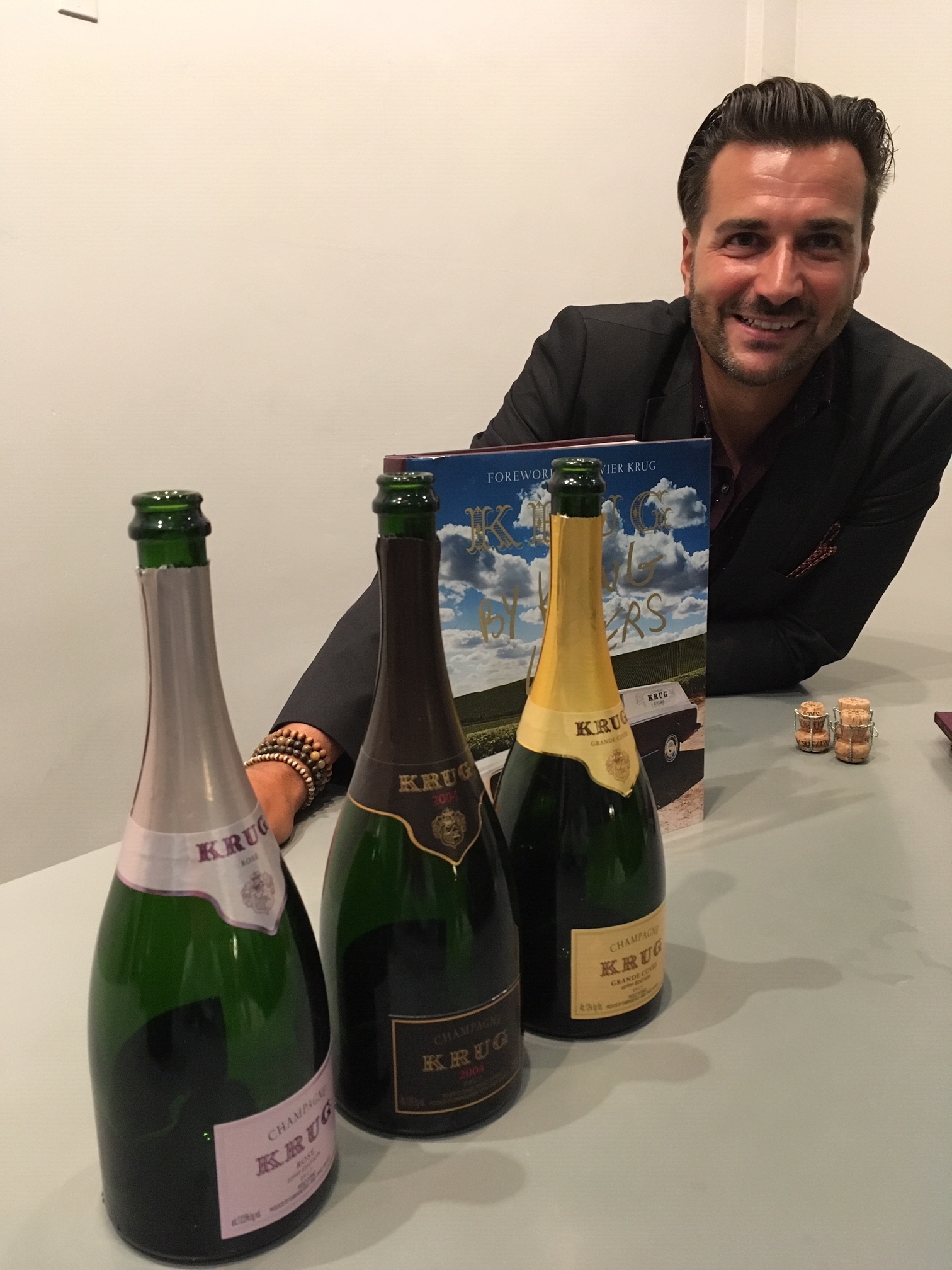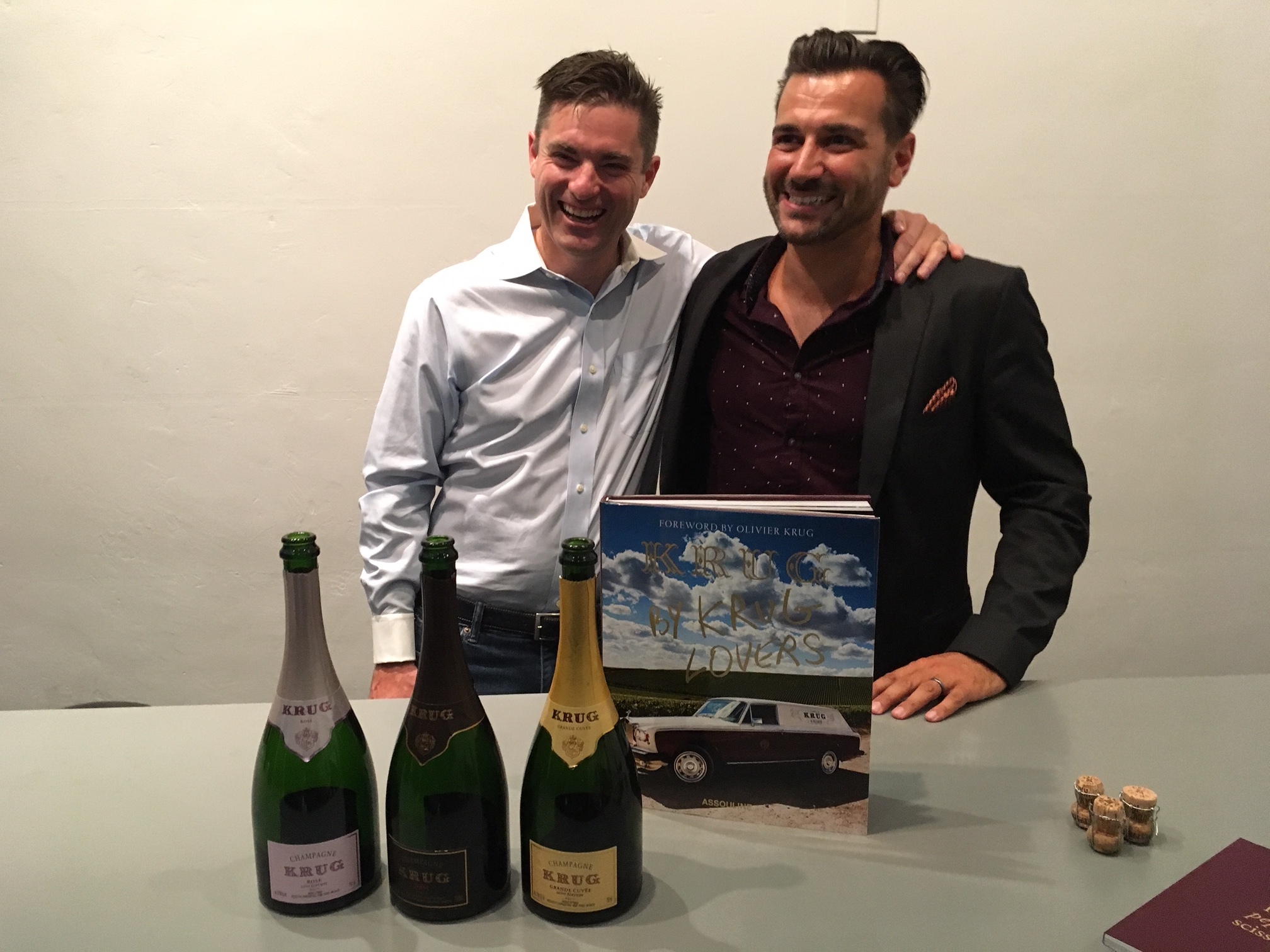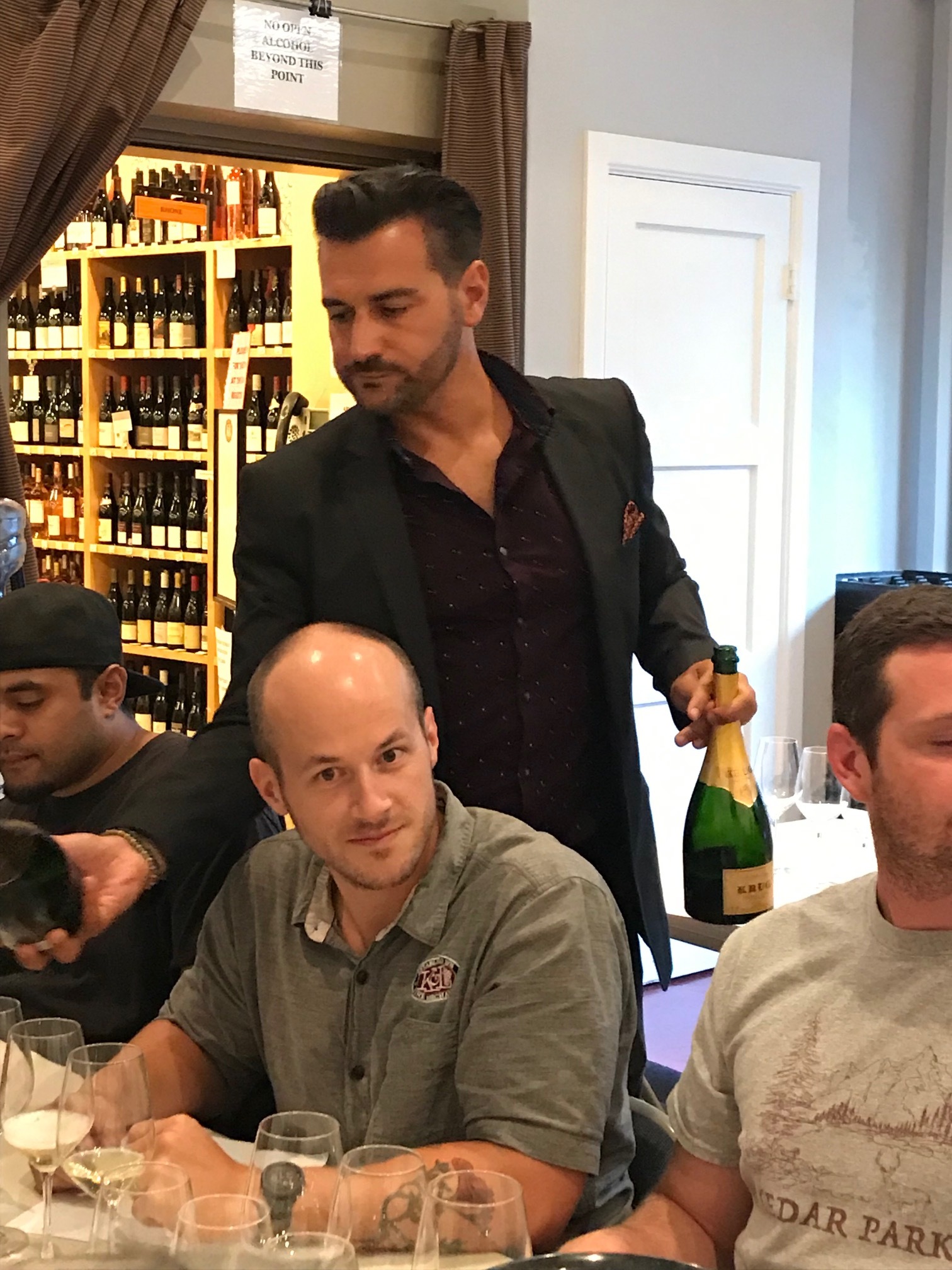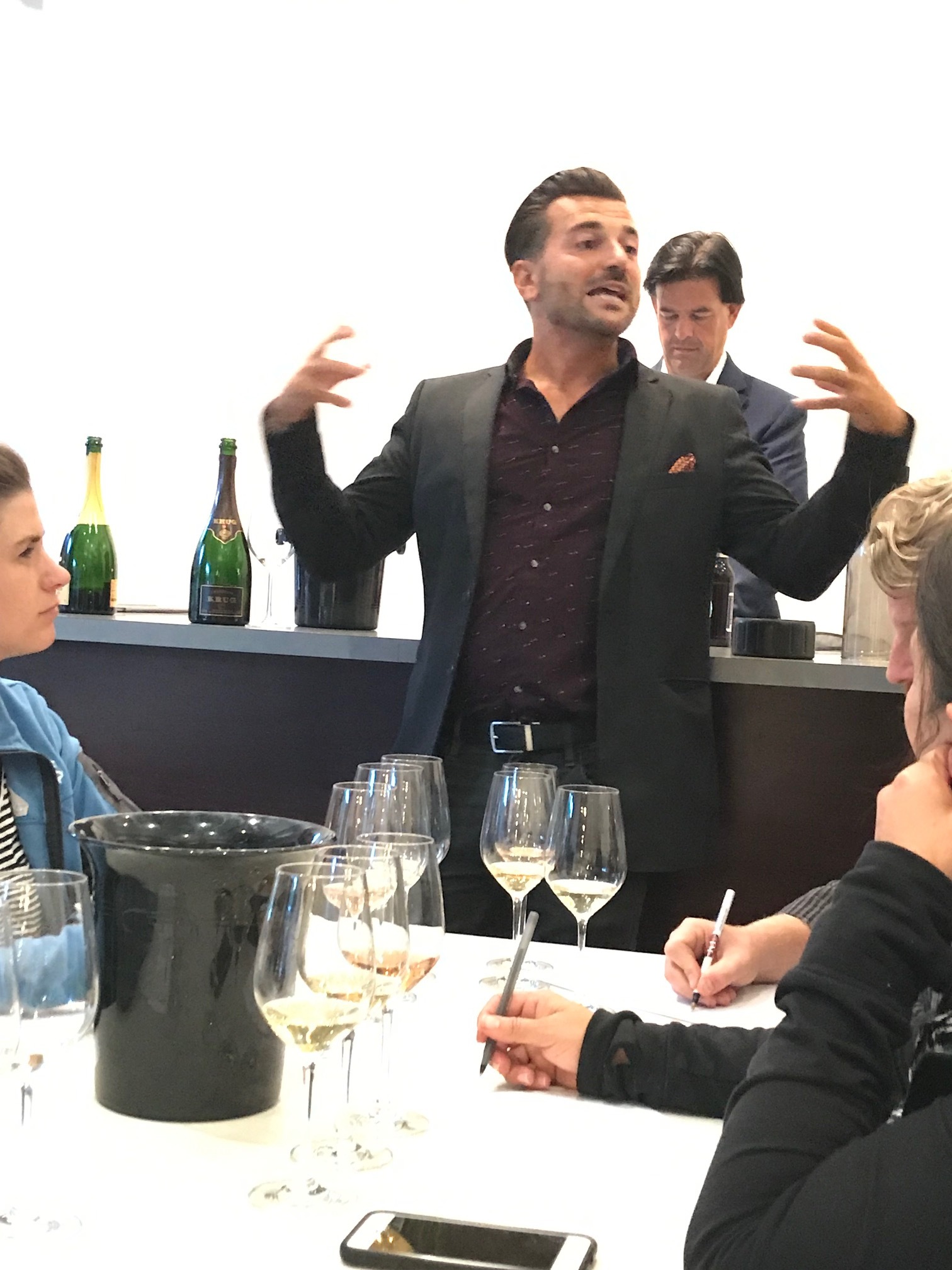An Enlightening Seminar on the Incomparable Champagne Krug
Last night, we were treated to an incredible after-hours staff seminar on the Champagne of Krug. Mr. Roberto Loppi, the new Krug ambassador for the US, presented the history, the savoir-faire and the wines of this top Champagne house to our Redwood City crew. We packed the tasting bar with our team and learned a lot about what I consider to be one of the greatest producers of wine in the entire world.
Founded in 1843 by Joseph Krug, this house has always had a clear goal; to create Champagne of generosity that would fulfill the wine lovers that would drink it. In Joseph Krug’s notebook that he created to leave a blueprint for his son, he wrote that the house should have two cuvées, one that is recreated every year to be the best possible wine by blending across time, and a second that tells the story of a good vintage. We were treated to both of these Champagnes, grand Cuvée and 2004 vintage, as well as a wine that he didn’t imagine- Krug Rosé.
We started by tasting the Krug "Grande Cuvée" 167 Ème Édition Brut Champagne. This Champagne was made from 191 different wines, the oldest from 1995 and the youngest from 2011. With 13 different harvests going back 24 years in this bottle, this wine is a true multi-vintage. The cellar master at Krug, Eric Lebel, peruses through over 4000 tasting notes of his, his team and the Krug family to make this wine. It is composed of 46% Pinot Noir, 36% Chardonnay and 17% Meunier with reserve wines making up 42% of the blend. I have been lucky enough to taste this on many occasions since it was first released this spring, and I have to say that it has opened up very well since then. I love the signature Krug nutty, toasty nose and the fresh line of chalk that balances it out on the long finish. The 164 is both refreshing Champagne and profound wine—it is up to you to decide how to enjoy it, the more I concentrated, the more I found in it, but thinking is not required—this is a pleasure to drink!
The next wine was the 2004 Krug Brut Champagne, which they call “Luminous Freshness” at the Maison. Unusually, this vintage has Chardonnay as its first ingredient, 39%, followed by Pinot Noir at 37% and Meunier at 24%. Now that it is 15 years old, this wine is just starting to open and show itself, but I am sure that it will last for generations in a good cellar. The ethereal, translucent mid-palate of this Champagne is a characteristic of the vintage- the wine seems to float in the mouth. The nose has the nougat, hazelnut, and brioche that one expects from Krug, but this wine does not impose. It is a perfectly elegant, perfectly balanced Champagne. I think that this is a vintage that many collectors have missed and the first since 1988 in the style. Vintages like this, with a long, steady, cool growing season used to be considered “classic” in Champagne but now happens very rarely. In my career, only 1988 and 2014 had similar conditions.
The Krug Brut Rosé 22 Ème Edition Brut Champagne was the final wine we tasted. They started making this two generations ago, but are only releasing the 22nd edition now. It only represents about 7% of Krug’s production, and as such, is allocated and not in stock all the time. The Rosé is made from 22 wines spanning 2005 to 2010, including 47% reserves and 9% red wine. The composition is 56% Pinot Noir, 28% Meunier, and 16% Chardonnay. This vinous, powerful rosé is an ideal partner for cuisine with its savory dark cherry fruit from old vine Pinot Noir in Ay that is used to make the red wine. The back end is dry, mineral, refreshing perfection.
I won’t forget this great night of Champagne—thank you so much, Roberto!
A toast to you,
Gary Westby





